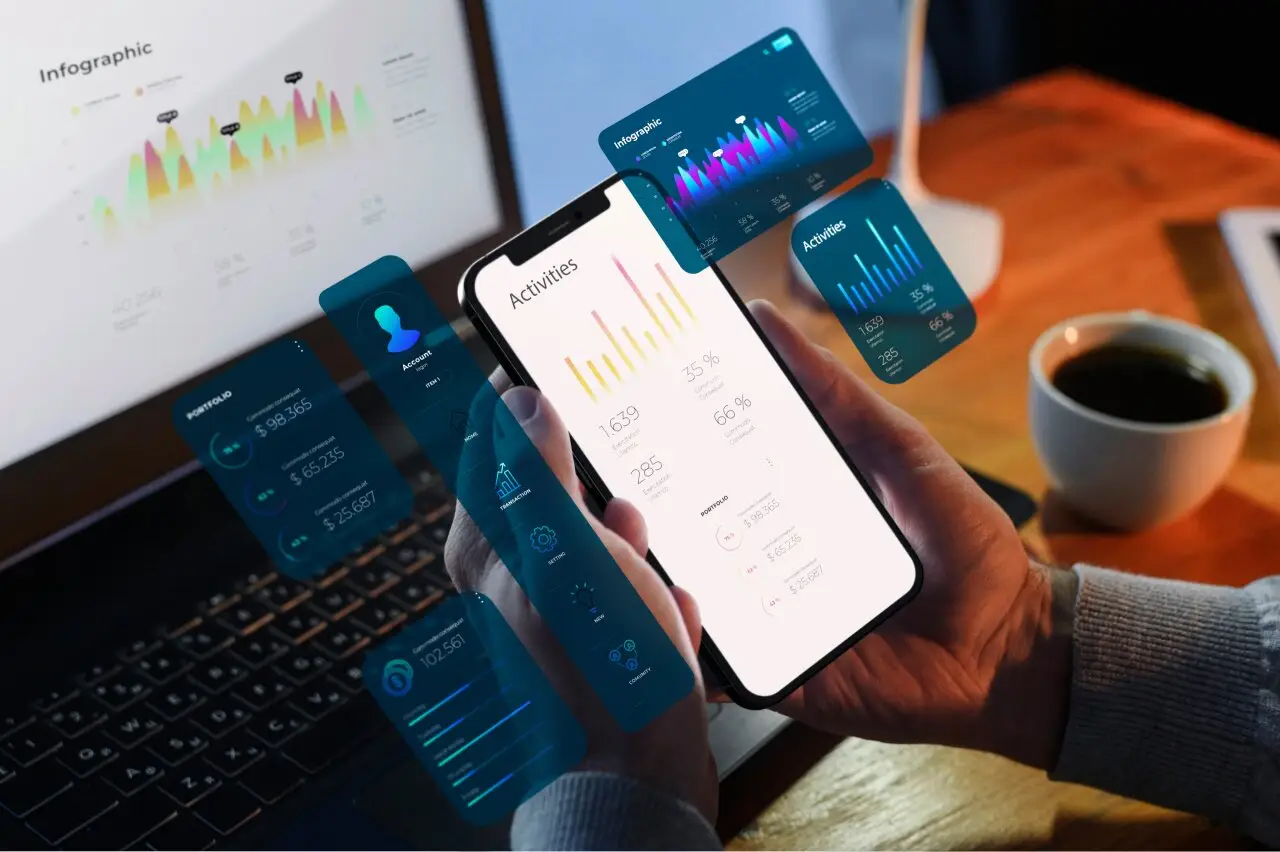How Custom Application Development is Transforming Business Processes

Custom application development serves as the cornerstone of modern business processes and workflows in the twenty-first century. These applications can range from simple task automation programs to complex tools designed to manage a multitude of workflows and procedures. While businesses do have access to a variety of off-the-shelf solutions for designing and optimizing such applications, a notable challenge arises with these “one-size-fits-all” options. Many of these pre-made applications, while functional, often lack the essential features required by specific teams or organizations. This limitation stems from their design to cater to a broad audience. To achieve optimal outcomes, many businesses find themselves resorting to multiple business process tools when developing applications. Consequently, organizations are now recognizing the compelling advantages that custom application development offers. By leveraging custom application development, businesses can create tailored, in-house solutions that precisely align with their unique requirements and operational demands.
Custom application development is the strategic process of conceptualizing, designing, and deploying software applications personalized to the unique needs of specific users or use cases.
Let’s consider an example of a custom application development project for a retail business.
Client: A medium-sized retail store with multiple branches.
Problem: The client wants to improve inventory management and sales tracking across all their stores. They currently rely on manual record-keeping, which is error-prone and time-consuming.
Solution: Custom Inventory Management and Sales Tracking System
Steps:
Requirements Gathering: The development team conducts interviews with the client to understand their specific needs. They identify the need for real-time inventory tracking, sales analytics, and integration with point-of-sale (POS) systems.
Design and Planning: The team designs a web-based application with a user-friendly interface for managing inventory, tracking sales, and generating reports. They plan to use a technology stack that includes a backend database, server, and front-end framework.
Development: Developers write code to create the application’s components, including a database for storing product information, sales data, and user profiles. They implement features such as barcode scanning for inventory updates and sales data integration with the POS system.
Testing: The application undergoes thorough testing to ensure that inventory data is accurately recorded, sales are tracked correctly, and reports are generated without errors.
Deployment: The custom application is deployed to the client’s server, and employees are trained to use it.
Maintenance and Support: The development team provides ongoing support, addressing any issues that arise and releasing updates to enhance the application’s functionality.
Security: The application is secured with user authentication, encryption of sensitive data, and regular security audits to prevent unauthorized access and data breaches.
This custom application addresses the client’s specific needs, streamlining inventory management and sales tracking, ultimately improving the efficiency and profitability of the retail business.
Custom Applications Development sometimes referred to as custom services, is created especially for a certain customer or business. They are customized to satisfy the unique needs, demands, and preferences of the clients. Typically, they are created from scratch using frameworks like React, Angular, Vue.js, and Net Core, along with programming languages like Python, C#, and Java.
Only the organization or client who commissioned them may use them; the general public is not permitted to utilize them. Applications with a custom interface can be used for several tasks, including data analysis, customer relationship management, and business process automation.
Businesses that use custom application development might reap numerous benefits. The following are a few advantages and benefits of developing custom applications:
Budget-friendliness
Effectiveness
Reliability
Customization ease
Combinations
minimal dangers to security
Usage ease
Budget-friendliness
Developing an application traditionally is not economical. The IT teams are frequently entrusted with developing, testing, and debugging programs after receiving the specifications. And there may be a high price for this. Custom Android app development can reduce the requirement for specialized resources and streamline application development costs because it takes fewer resources overall.
Effectiveness
Custom apps are designed to optimize particular workflows and assist procedures within an organization, which is one of their main selling points. They are better suited to effectively address business challenges because they are usually developed with the users in mind or by the users themselves.
Reliability
A solution specifically designed for you can expand along with your company. Developing an application that is tied to a particular task and workflow enables developers to go back and adjust certain steps in the process to manage higher data and request volumes.
This implies that to scale and access additional capabilities, you won’t need to switch to a new solution.
Customization ease
One of the main advantages of bespoke mvp development services is customization. Applications developed traditionally frequently require outside assistance to configure and personalize. These could be external developers, authorized product experts, or members of the IT teams. Custom applications greatly simplify customization because business users have total control over how their apps are configured.
Combinations
Every company already uses tools and systems to manage operations. Compatibility with these platforms is one of the most important factors to take into account while creating custom apps.
These days, a lot of application development platforms have API integration features that make it simpler to integrate new applications with current systems, saving you money on purchasing more expensive new solutions to meet your demands.
Minimal dangers to security
Commercial tools are frequently used by multiple people. This increases its susceptibility to security risks and adds more possible entry points for outside attacks. A cloud-based platform has a custom-built application; a fantastic low-code platform has the newest security, compliance, and data protection features, making it safer and simpler to store and trade vital data.
Usage ease
For business users, the majority of generic programs have a high learning curve. When it comes to custom software, its users are also its developers. Without the need to know how to hardcode, a straightforward no-code development platform guarantees total control over the application development process. Using pre-built templates for convenience, users can create completely working apps from scratch using the no-code platforms.
When a team or department needs to create a new application in a typical work environment, they have to submit a request to the IT team, which assists them in finding and selecting the best apps for their needs.
It follows that traditional app development is dependent on the IT department. Thus, everything from coding to backend development to bug tracking and delivery is handled by IT teams. Since the IT team is also responsible for other business-critical duties, this might soon become too much for them to handle.
They are frequently uninterested in the issues they are supposed to resolve and ill-prepared to produce outcomes quickly. Not to mention how costly and time-consuming it is to create apps from the ground up, modify them, and fix issues.
The construction of custom apps is very similar to that of regular apps. Both ideas center on creating apps with a limited set of specifications depending on the particular requirements of a certain group of consumers. There are, nevertheless, a few key distinctions.
The following are the main characteristics of both custom and conventional application development:
The business user that creates the program has total control over the custom application development platform, which is not focused on the IT department. When developing apps traditionally, consumers have to explain their business requirements to their IT departments.
Platforms that promote citizen development are employed because custom application development keeps end users engaged. Usually, these don’t involve a lot of code. Since IT teams are involved in the application construction process, conventional application development is wider than no-code applications.
The change in control allows for faster development of custom applications. Requests for conventional application development must go through IT teams, who are frequently a bottleneck, making the process slower.
Because custom app development services use low-code/no-code applications, they are simpler to configure and customize. Conventional apps require systemic updates or feature customization to be handled by outside developers or experts in the product.
Custom Android app development is different, yet it still uses the same approaches as other types of application development. Here are some instructions for making unique applications from scratch:
Step 1: Identify the end user and the issue
Each application is designed to solve a particular end-user’s problem. A critical initial step is to comprehend the issue and the role the application will play in the end user’s life.
Step 2: Build a prototype
Imagine the design of the application. This entails putting the workflow’s essential features and information requirements into a visual form as well as figuring out what data is needed to process requests made within the application.
Step 3: Put the application together
Building the application on a low-code or no-code platform is the third phase in the creation of a custom application. Since the business user is the one who understands the ins and outs of each request as well as what is required to bring about resolution, this stage greatly depends on their experience.
Step 4: Model
The testing stage of the creation of a bespoke app development services application is one of the most important ones. This stage should identify any potential issues with the application, as well as any mistakes or actions that require revision.
Step 5: Activate
Possibly the most satisfying stage of developing a custom application is this one. When an application is pushed to a live production environment, it becomes live, and users can participate, submit requests, and then carry them out. To make sure no bugs or problems have gotten through the cracks, applications need to be watched over for a while.
Step 6: Adjustment
Creating a custom Android app doesn’t stop there. To ensure optimal performance and production, the last stage entails measuring critical indicators, monitoring performance, and making small adjustments.
Citizen developers are given all the tools necessary to construct the business tools that an organization requires through custom application development. This method of developing iOS apps has proven to be more effective and less expensive than traditional app development over the last few years.
You may streamline iOS development services to meet your organization’s demands while bridging the gap between your IT teams and business users with a complete low-code/no-code application development platform like Hudasoft.
With Hudasoft, – A Web App Development Company, you can accomplish more tasks on a single platform because of its low-code and no-code features. It genuinely embraces simplicity and fills the gap between business users and IT teams.
FAQs:
- What is custom application development?
This involves creating software applications customized to meet the specific needs and requirements of a business or organization. Unlike off-the-shelf software, custom applications are designed to address unique challenges and objectives, offering a more precise fit for the user’s operations.
What is business process application development?
This focuses on developing applications that streamline, automate, and improve business processes. These applications are designed to enhance efficiency, reduce manual effort, and optimize workflows within an organization, often integrating with existing systems to facilitate smoother operations.
How does custom software development benefit your business?
Custom software development offers numerous advantages, including increased efficiency through personalized solutions, scalability to grow with the business, and a competitive edge by addressing unique business challenges. It also ensures better integration with existing systems and can provide enhanced security tailored to specific business needs.












